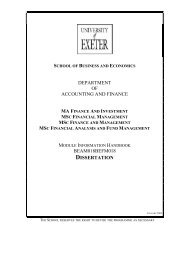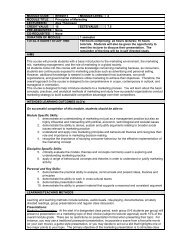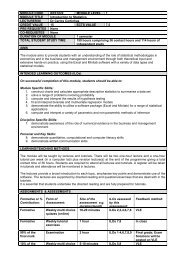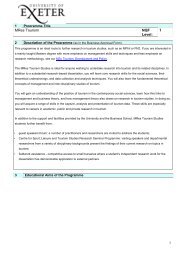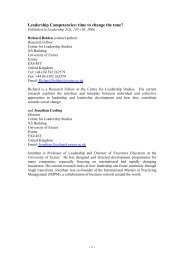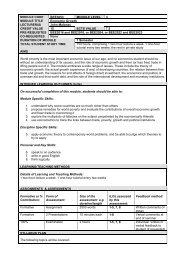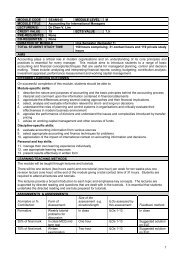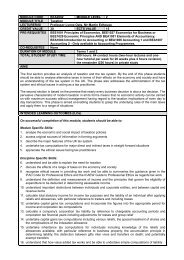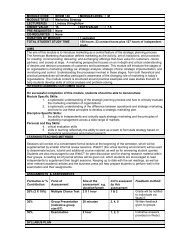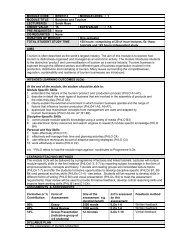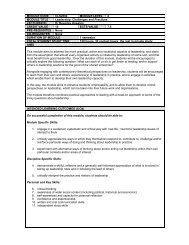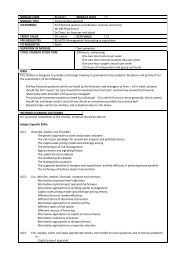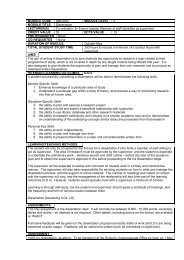Francesca Sanna-Randaccio paper - The Business School
Francesca Sanna-Randaccio paper - The Business School
Francesca Sanna-Randaccio paper - The Business School
You also want an ePaper? Increase the reach of your titles
YUMPU automatically turns print PDFs into web optimized ePapers that Google loves.
20 This parameter also accounts for other additional fixed costs associated to FDI.<br />
21 A shift from NR to TR implies that firm 1 looses the protection from transport costs previously enjoyed in the<br />
home market, but at the same time it removes the competitive disadvantage previously faced as compared to the<br />
local producer in country II. <strong>The</strong> lower competition effect seems to suggest that the first effect prevails on the<br />
second.<br />
22 A proof is available on request from the authors.<br />
23<br />
<strong>The</strong> conclusions may be easily extended to G , f G1,<br />
h<br />
1 with G i,<br />
h 0 .<br />
24 <strong>The</strong> differences in the impact of unilateral mitigation measures between the short/medium term and the long<br />
term are underlined by OECD (2009) and Bergmann et al. (2007).<br />
25 Several simulations were performed, showing that the results are robust to perturbations in the parameters set.<br />
26 NR<br />
By restricting the parameter range to values such that ˆ 1,<br />
II 0<br />
export) region.<br />
27<br />
That is below the horizontal line corresponding to s ( t I t II )<br />
28 It is assumed that foreign profits are fully repatriated.<br />
29 <strong>The</strong> emission coefficient is set equal to 1, see Section 3.1.<br />
q , we are ignoring the increase in the NE (no<br />
.<br />
30 As the measure of carbon leakage suggested by IPCC (2007) (see note 2) is not easily quantifiable in the PR<br />
and TR cases, we adopted a simpler indicator –the impact on world emissions- which likewise accounts for the<br />
variation in emissions in both markets.<br />
31 World Bank (2008) p.110 indicates that national policies in this regard differ. Revenue from the German<br />
ecotax are almost fully returned to taxpayers while Danish carbon tax revenues from industry are entirely<br />
recycled in that sector. On revenue recycling, see also Bergmann et al. (2007), p. 80, OECD (2009), p. 35.<br />
32 <strong>The</strong> full expression of the change in welfare is reported in Appendix C.<br />
33<br />
With bI bII<br />
b<br />
will certainly rise.<br />
, since PR is possible only if we are in the high transport cost scenario, global emissions<br />
34 IPCC (2007) chapter 11, p.666 states that transport costs favour local production and thus decrease the<br />
probability of carbon leakage.<br />
35<br />
If we consider only one source of market asymmetry, setting I bII<br />
change.<br />
b , the level of world production does not<br />
36 We will focus on HR 2454, as the Kerry-Lieberman Bill is has not been discussed at the Senate.<br />
37 See US EPA (2009), p. 8, for the definition of industry’s energy intensity etc..<br />
39



